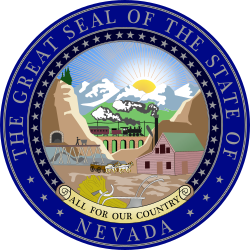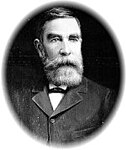| |||||||||||||||||||||||||||||||||||||
| |||||||||||||||||||||||||||||||||||||
 County results Jones: 30–40% 40–50% 50–60% 60–70% 70–80% Cleveland: 40–50% 50–60% | |||||||||||||||||||||||||||||||||||||
| |||||||||||||||||||||||||||||||||||||
| Elections in Nevada |
|---|
 |
The 1894 Nevada gubernatorial election was held on November 6, 1894, in the U.S. state of Nevada.
Contents
Incumbent Republican Governor Roswell K. Colcord did not stand for re-election.
Silver Party nominee John Edward Jones defeated Republican nominee Abner Coburn Cleveland, Populist nominee George Peckham, and Democratic nominee Theodore Winters with 49.87% of the vote.

